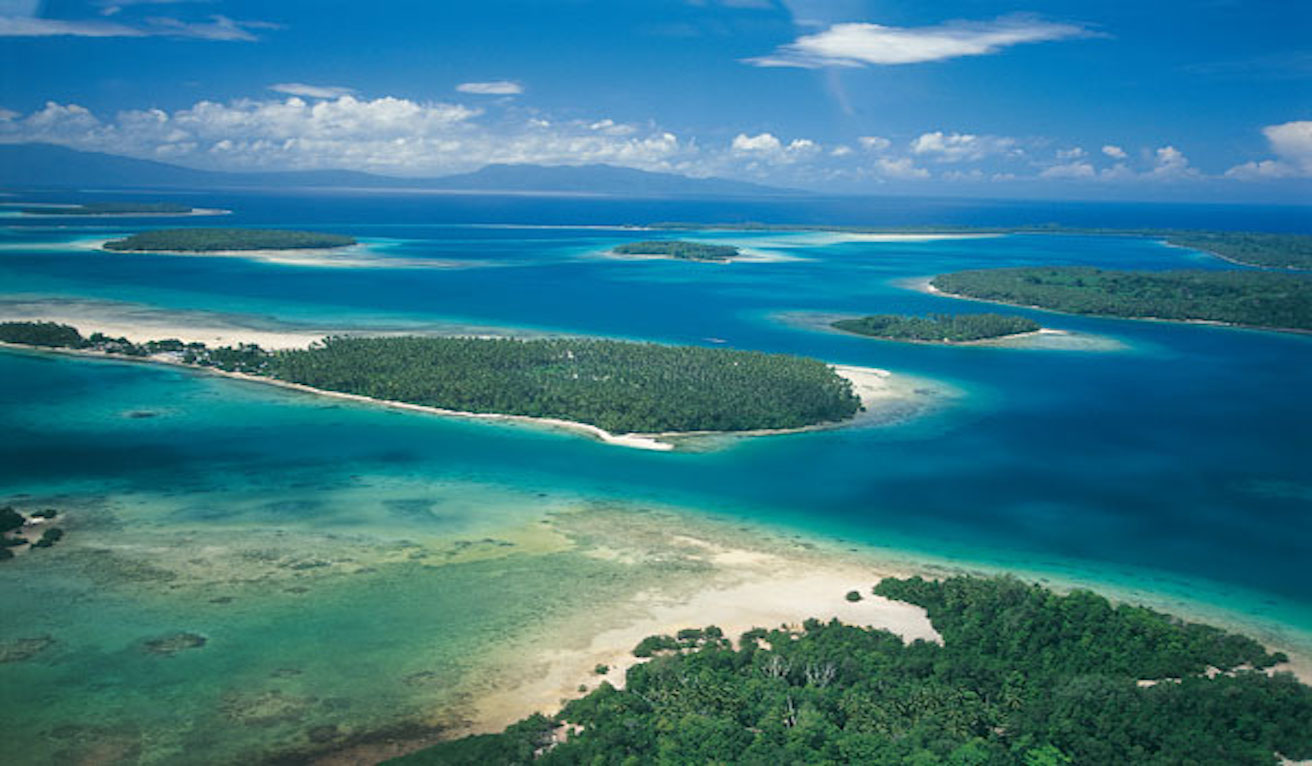Infrastructure, Conflict and the Pacific – Risks and Realities

The growth in Australia’s investment in the Pacific has led to the development of significant local infrastructure projects. However, in respect to the Solomon Islands the delay in investing in infrastructure has resulted in a number of local conflict risks.
Discussion of Australia’s recent interest in infrastructure for Pacific has been predominantly about geopolitical conflict — particularly the rising economic and political influence of China versus Australia’s “traditional” dominance as an aid provider in key sectors, including security.
One of the key Pacific sites of this geopolitical conflict is the Solomon Islands, which sits in a messy nest of historical ties with Japan and US from World War Two, both fond and traumatic memories of its experience as a British colony in the past, its present engagement as members of the Commonwealth, relations with Australia as its primary aid provider over several decades, allegiance with the Republic of China (Taiwan) in international politics and a dominance of China in all its export industries, either in direct Chinese control or via Southeast Asian corporations.
The rush by a range of donors and lenders to fulfil the many Solomon infrastructure desires, in part motivated by geopolitical conflict, also poses several local conflict risks. This is not to say that infrastructure should not be invested in, indeed its neglect itself is a factor in conflict.
The lack of investment in infrastructure has made who provides basic infrastructure a conflict issue. It has paved the way for extractive industries to offer the bare minimum in economic gain to local communities. Asian mining and logging in Solomon Islands typically have low rates of royalties, revenue to government has been waived by political leaders, use mainly foreign workers rather than creating jobs in the industry, and results in environmental degredation, loss of food security and the sexual exploitation of women and girls. Despite all this, when I go out to rural communities, one of the few “benefits” of mining and logging cited by locals is the bulldozers carving out rough and ready gravel roads. In Guadalcanal, some of the positive benefits of logging and mining roads have been to reduce travel times for women to market agricultural produce, and for small local tourism ventures to start up along the rough roads, such as guest houses and day hikes to previously unaccessible sites.
The lack of paved roads and well maintained gravel roads, also means that the state of the local roads is often a hot button issue in elections. Members of Parliament in some constituencies — including urban areas — will fill in potholes in local roads in the few months leading up to elections. Trucks and boats brought with government funds will be named as and/or perceived as “from” local Members of Parliament. This feeds Solomon Islands clientalist politics, where material goods and transport services provided by MPs are larger determinants of votes than policy positions, political party platforms and the ability of a governing coalition to provide adequate services like health and education.
Where infrastructure is built and maintained is also a conflict factor. Development is highly centralised in and around Honiara, the capital city on the island of Guadalcanal, which hosts the most education facilities, formal employment opportunities, and development of land in the country. In contrast, there are many provincial regions of Solomon Islands relatively untouched by development — where people live with few formal employment opportunities, no electricity, intermittent telephone signals and long distances to the nearest clinic, school or police station.
This huge gap between Honiara and other regions in terms of services, employment and infrastructure was a key causal factor of the Solomon Islands armed conflict, known as the tensions, from 1998-2003. On both sides of the armed conflict, a sense of relative deprivation operated that has largely remained unaddressed. Men from Guadalcanal, particularly the remote Weathercoast, which remains unaccessible by road to this day and with low socioeconomic status, felt they were not benefiting from economic activity in Honiara and became militarised. On the other side, men from Malaita, similarly mired in poverty and disadvantage, also mobilised around a sense of being under threat and being left out from development.
Sixteen years after the civil conflict, the sense of relative deprivation in provincial locations is still alive, and seen most visibly in the rise of anti-state movements. For example, in Makira when I visited in 2016 there was widespread fear of a movement in the west known as the Platform which involves rejection of all forms of the state — children are banned from attending school, women forbidden to attend clinics — contributing to a local baby boom, — people can’t vote, and police officers have been chased out of villages by boys armed with knives and bows and arrows. The level of its influence was seen during recent census data collection when government officers had to negotiate with leaders of the movement to enter communities to collect census data, the state thus being subservient to the movement. Makira local leaders have long been calling for further development in the region, requests including roads, a wharf and a community radio station. As local journalists have explained since these calls fall on deaf ears, this sense of neglect and isolation is mobilised into an anti-state movement.
Another example of the consequences of isolation I witnessed personally was in Lata, the provincial capital town in Temotu, the province furthest from the capital. It used to have no radio service, an extremely unreliable flight service to Honiara, an airstrip which means the plane could not land when it rains, a hospital with holes in the wall, and a general sense of being cut off from the rest of the country. When I was there in 2013 cash was in short supply and many local shops and canteens were poorly stocked or closed. The reason for the cash shortage was a pyramid scheme that so many had fallen for that it created a town-wide economic crisis. Being so removed from information, services and development, such as infrastructure, means Temotu was, and is, vulnerable to such scams. Currently, Temotu is under intense pressure to open up to mining and logging from the companies involved and their political backers, resistance has been in the form of sabotage, but it is not unimaginable that these type of conflicts could broaden.
How infrastructure is built, and its use for greater circulation of people in rural areas, also poses risks to safety of women and children in particular. Infrastructure typically brings fly-in fly-out (FIFO) male teams of technical experts and workers to rural communities that usually have had limited contact with outsiders. All kinds of male workers from those building a road to those cleaning up an oil spill, after a few days or weeks will inevitably ask the question: “Where’s the girls?”
This question has several results. One is in most parts of the isles, brothers and fathers have control over the movement and socialisation of their daughters, nieces and sisters and female cousins. When they hear “where’s the girls” they may see this as an opportunity to pressurise female relations into a sexual relationship with a visiting miner, logger or infrastructure worker, in return for money, material goods, or alcohol and cigarettes. This has led to the “logging wives” phenomenon where young women, even underage girls, are “married” to expatriates in return for cash and other material goods, such as timber or roofing iron sheets. In other areas, enterprising males start up prostitution businesses catering to the expatriate workers’ needs.
In my own observation, prostitution in Honiara, including servicing loggers in Guadalcanal province, has at least doubled in Solomon Islands since 2010, although records and data remain poor. One of the main sites for this trade is the Botanical Gardens which exists just 400 metres from the Royal Solomon Islands Police Force Headquarters. The lack of intervention from the Force — which has benefited from Australian Government and Australian Federal Police assistance over decades — sends a clear signal to the profiteers and customers that the illegal prostitution trade and trafficking of girls is tolerated and can continue.
The major infrastructure project at the moment funded by Australia is the undersea internet cable. While improved internet services are sorely needed for local businesses and services such as education, the danger is with expanded internet use, sexual exploitation of women and children can expand from being around mining, logging and infrastructure sites, to being anywhere, and to being globalised.
Solomon Islands is not just a playground for geopolitical conflict, where infrastructure can be offered like toys to entice leaders to get involved in the game. It is also home to over 600,000 people with their own conflicts and social exclusions, including local and provincial needs and grievances, governance gaps, clientalist politics versus state building efforts, and gender inequality resulting in exploitation of women and children. The most immediate risks of conflict related to infrastructure are local, not international: donors need to pay more attention and invest in preventative actions and responses now.
Dr Anouk Ride researches peace and conflict, interpersonal violence and social inclusion and is based in Solomon Islands. Her website is www.anoukride.com/
This article is published under a Creative Commons Licence and may be republished with attribution.




